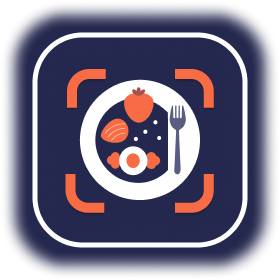As temperatures drop and outdoor exercise becomes less appealing, many fitness enthusiasts shift to indoor workouts. Whether you're using a home gym, following online workout videos, or attending indoor classes, your nutrition needs remain crucial for performance and results. Understanding how to fuel indoor exercise optimizes your efforts and keeps you progressing through the colder months.
Track Your Workout Nutrition
Discover which foods fuel your best workouts. MyCalorieCounter makes it easy to photo track meals and connect nutrition to performance.
Download Free AppHow Indoor Training Differs Nutritionally
Indoor workouts create unique nutritional considerations:
Temperature Regulation
Indoor environments are typically warmer than outdoor winter settings. You'll sweat more than you might expect, increasing hydration needs. Don't assume indoor means less fluid loss.
Workout Convenience
Being near your kitchen makes pre and post-workout nutrition easier to time perfectly. Take advantage of this proximity to optimize your fueling strategy.
Session Consistency
Indoor workouts often follow more consistent schedules than weather-dependent outdoor exercise. This allows for more precise meal planning and timing around your training.
Pre-Workout Nutrition for Indoor Training
What you eat before indoor workouts directly impacts performance:
Timing Your Pre-Workout Meal
Eat a balanced meal 2-3 hours before training, or a lighter snack 30-60 minutes prior. Indoor proximity to food makes timing easier - use this advantage rather than training fasted when energy matters.
Ideal Pre-Workout Foods
Combine easily digestible carbs with moderate protein: oatmeal with banana, toast with peanut butter, Greek yogurt with berries, or a small rice bowl. Avoid high-fat and high-fiber foods that slow digestion.
Quick Pre-Workout Options
When time is short (30 minutes or less), choose simple carbs: a banana, dates, rice cakes with honey, or a small smoothie. These provide quick energy without digestive discomfort.
"Photo tracking my pre-workout meals helped me identify what foods give me the best energy. Turns out oatmeal with banana is my perfect combo - I have more power in my workouts and no stomach issues!"
- David R., Improved workout performance
Optimize Your Pre and Post-Workout Meals
See exactly what you're eating around your workouts. Photo tracking reveals patterns that improve your training results.
Start Tracking TodayHydration for Indoor Exercise
Indoor hydration needs are often underestimated:
Pre-Workout Hydration
Drink 16-20 ounces of water 2-3 hours before exercise, and another 8 ounces 30 minutes before starting. Beginning well-hydrated prevents mid-workout energy crashes.
During Workout Hydration
Aim for 7-10 ounces every 10-20 minutes during intense indoor training. Keep water bottle visible and accessible - indoor convenience means no excuse for dehydration.
Electrolyte Considerations
For workouts lasting over 60 minutes or in warm indoor environments, consider adding electrolytes. Coconut water, electrolyte tablets, or a pinch of salt in water replaces what sweat removes.
Post-Workout Recovery Nutrition
What you eat after training determines how well you recover:
The Recovery Window
Consume protein and carbohydrates within 30-60 minutes after exercise. This window is when muscles are most receptive to nutrients for repair and glycogen replenishment.
Protein Priorities
Aim for 20-40 grams of protein post-workout. Options include protein shakes, Greek yogurt, eggs, chicken, or cottage cheese. Complete proteins with all essential amino acids are ideal.
Carbohydrate Replenishment
Include carbs to restore glycogen: fruit, rice, potatoes, or whole grain bread. The ratio of 3:1 or 4:1 carbs to protein optimizes recovery for most training types.
Real Food Recovery Meals
Whole food options work as well as supplements: chocolate milk (natural carb-protein ratio), turkey sandwich, eggs with toast, or salmon with sweet potato. Photo track these meals to ensure adequate recovery nutrition.
Nutrition for Specific Indoor Workouts
Different training types have different nutritional needs:
HIIT and Cardio
High-intensity interval training burns significant carbohydrates. Prioritize carb intake before and after these sessions. A banana before and a smoothie after works well for most people.
Strength Training
Muscle building requires adequate protein spread throughout the day - not just post-workout. Aim for 0.7-1g protein per pound of body weight daily, with 20-40g within the recovery window.
Yoga and Flexibility
Lower-intensity indoor sessions like yoga require less pre-workout fuel. A light snack or training fasted often works fine. Focus on hydration and a balanced meal afterward.
Virtual Classes
Online workout classes vary in intensity. Match your nutrition to the specific class demands - a dance cardio class needs different fueling than a gentle stretching session.
Tracking Your Training Nutrition
Consistent tracking reveals what works for your body:
Log Pre-Workout Meals
Photo track every pre-workout meal and note how you felt during training. Over time, patterns emerge showing which foods optimize your performance.
Document Recovery Nutrition
Track post-workout meals and monitor recovery quality. Are you sore longer when you skip protein? Do certain foods reduce fatigue? Data guides better choices.
Connect Food and Performance
Use MyCalorieCounter to correlate nutrition with training outcomes. This personalized feedback helps you dial in the perfect fueling strategy for your indoor fitness routine.
Fuel Your Fitness Goals
Join thousands of active users who've improved their workout nutrition with photo tracking. See the connection between food and performance.
Get MyCalorieCounter FreeConclusion
Indoor workout nutrition doesn't need to be complicated. Focus on timing your meals appropriately, staying hydrated despite comfortable temperatures, and prioritizing recovery nutrition. Photo tracking connects your eating patterns to exercise performance, helping you optimize your approach as the indoor training season progresses.
Your Best Indoor Training Season Starts Now
Download MyCalorieCounter and take control of your workout nutrition. Track meals, monitor recovery, and optimize your results.
Download Now - FreeTrusted by fitness enthusiasts worldwide
